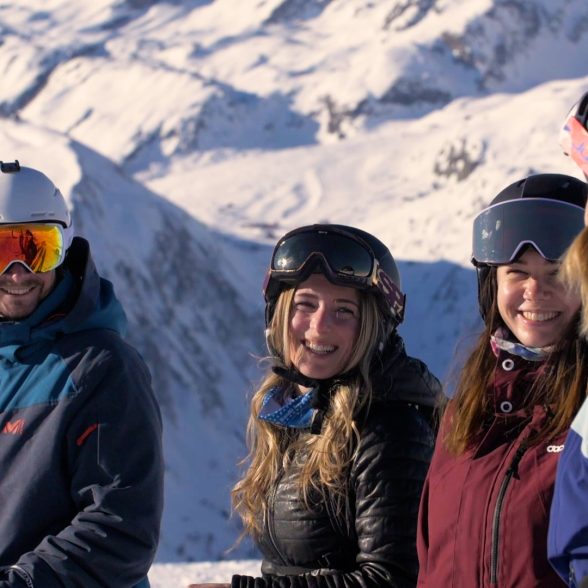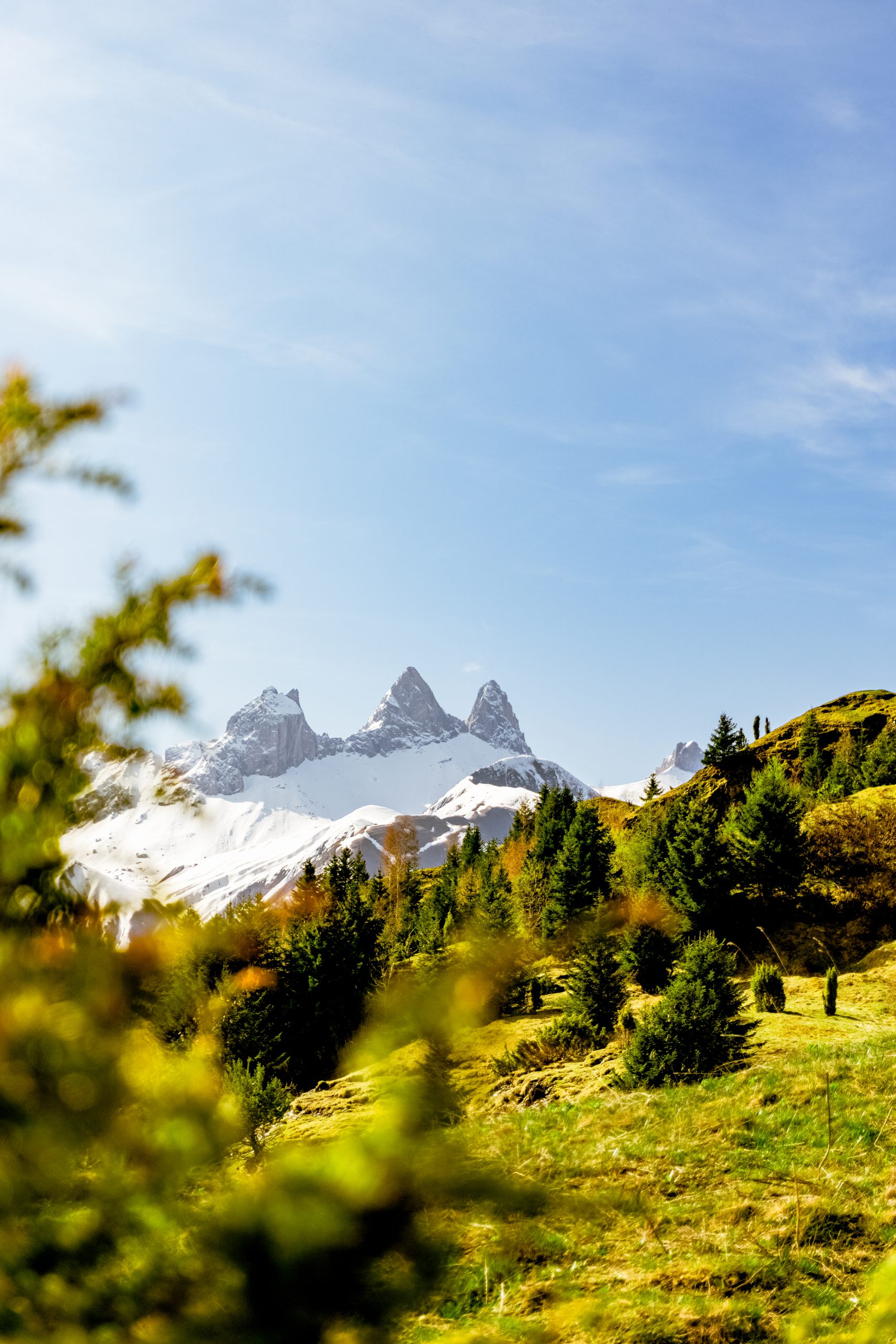What to look out for when skiing
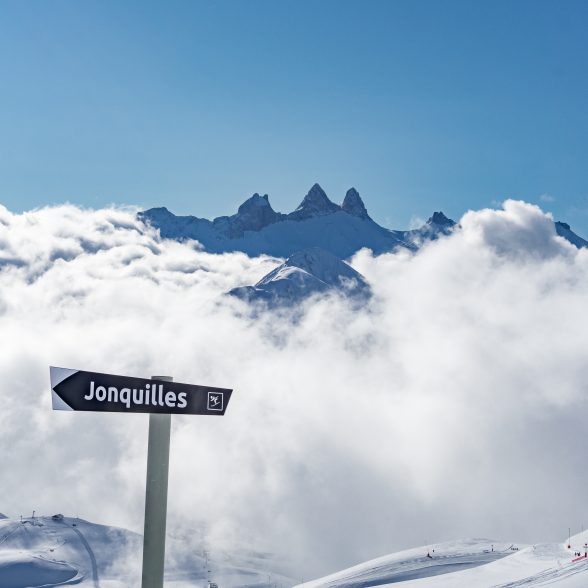
Signage
recognising and respecting itRespect the signs and markings on the ski runs: ski runs are classified according to their level of difficulty (green, blue, red, black) and it is important to respect these classifications to avoid the risk of accidents. It’s also important to look out for the orange banners that may indicate :
- A crossing or slow-down zone
- A closed track or sector
- A beginners’ zone
- An area shared by skiers and pedestrians
- A reserved area (for a competition or training session, for example).
Watch out for other skiers
The ski area is a shared spaceIt is important to ski with caution and respect other skiers on the slopes. Downhill skiers have priority over upstream skiers, as their visibility at the top of the piste is very limited.
It is also important to signal if a skier is in difficulty or injured.
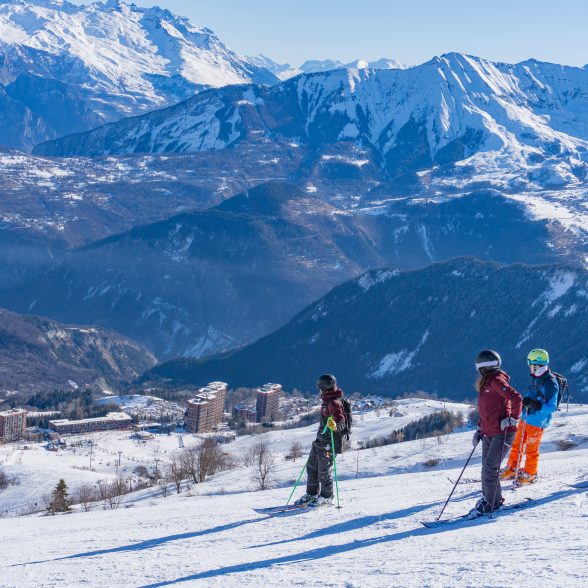
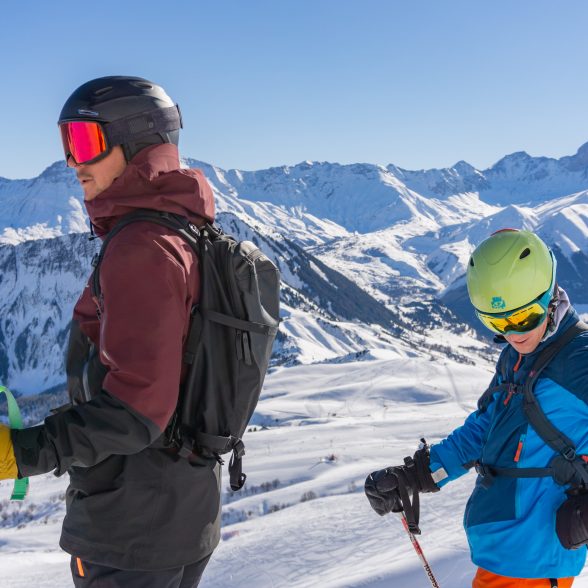
Adapting your behaviour
For everyone's safetyOn the slopes, it’s essential to know how to adapt your behaviour, whatever the situation. Fitness, weather, snow cover, etc. Depending on your level of skiing, there are a number of factors to consider:
- Know your limits: it’s important to ski within your abilities and limits and not to put yourself at risk by skiing in areas that are too difficult. Use pistes that are suited to your level and don’t hesitate to prepare your outing in advance using the piste map or by asking our teams for advice.
- Avoid skiing alone: it is advisable to ski in a group or with a partner so that you can help each other if necessary.
- Do not park in the middle of the piste or under an overhang. If you need to take a break, park at the edge of the piste, in an unobstructed area where other skiers can see you.
- Adapt your speed when approaching junctions and busy areas, especially on snow fronts which are popular areas for beginners and children’s ski lessons.
Adopting the right habits
Equipment, food…- Wear a helmet: wearing a helmet is strongly recommended to reduce the risk of head injury.
- Drink water: as the air is drier at altitude, the body becomes dehydrated more quickly, so it’s important to carry water with you to keep regularly hydrated.
- Apply sun cream: the sun is more aggressive in the mountains, so it’s advisable to use sun cream with a factor of 30 or higher.
- Take the time to have a snack: even though you’re skiing downhill, it’s still a demanding sport and your body expends more energy. Take a cereal bar or fruit pasta with you on your outing.
- Keep abreast of the weather: in the mountains, the weather is very changeable, so check the weather reports regularly before you set off on the slopes.
- Equip yourself for the weather: thermal underwear, appropriate socks, under-jacket, anorak, etc. We’ll give you all the advice you need on what to wear here.
